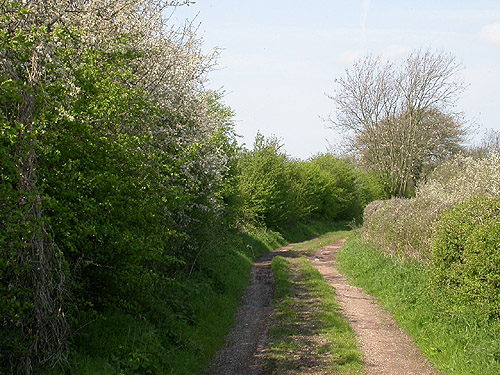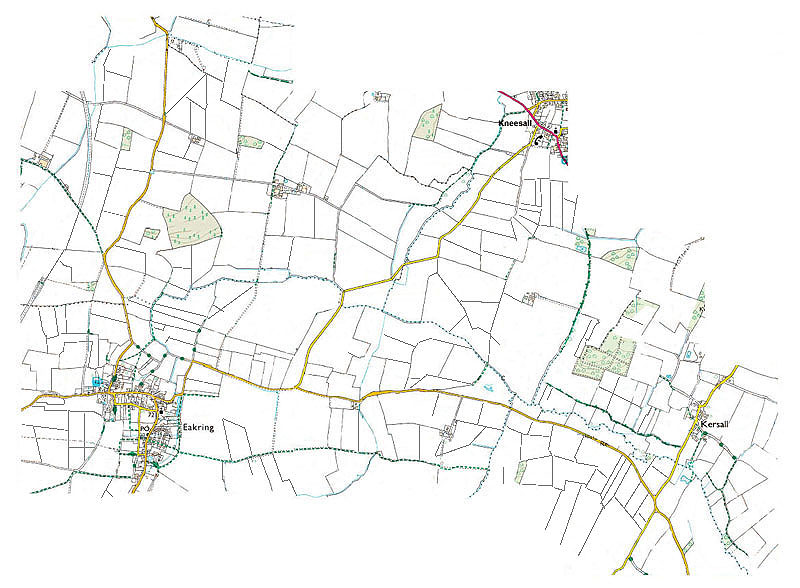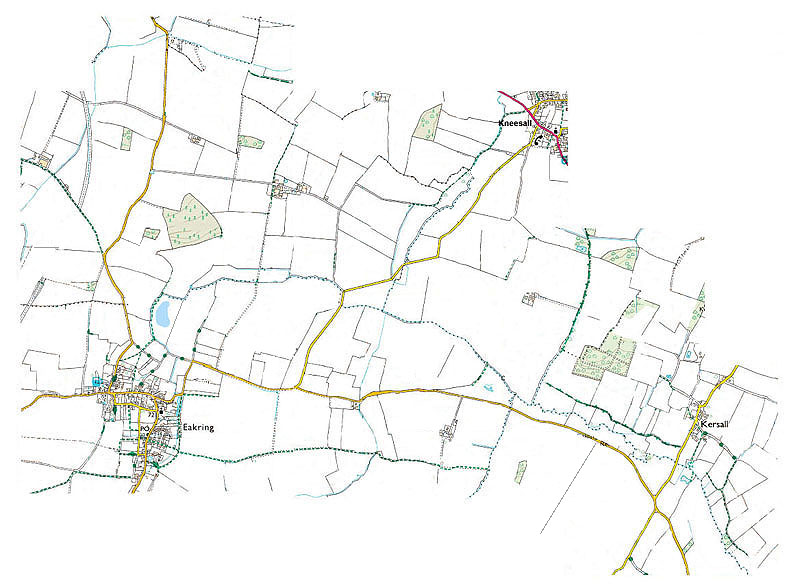

| Hedgerow loss at Eakring and Kersall since the 1950's | ||
 |
This hedgerow is one of
the few remaining remnants of how much of the area once
looked. This is a fine example of mature hedgerow, so
typical of the UK countryside much less than 50 years
ago. The Eakring and Kersall area is by no means unique in its wide-scale loss, as all of Nottinghamshire has been similarly affected. It is perhaps ironic how modern farmers are now awarded money to re-plant the hedgerows that they removed several decades ago in order to improve crop production. With the public's greater awareness towards the need to protect the countryside, conservation issues relating to hedgerow removal, are now more at the fore-front of modern-day thinking and planning, than they were ten years ago. |
|
| The recording area, circa 1950
|
||
| The two maps produced here, graphically illustrate the amount of hedgerow lost in the area since the 1950's. All of the recording area has been affected to some degree, but the south-eastern corner of the area has particularly suffered. Everyone has heard about the large-scale hedgerow removal, carried out since the onset of modern farming practices since the 1940's and 50's, but rarely has the extent of the loss been able to be shown before. | ||
 |
||
| The recording area in 2007 |
||
| New or replacement hedges are few, with just one new hedge near Parkhill Plantation being planted in the past ten years, plus one along the Kneesall Road that was removed, then immediately replanted with new plants. Michael and James Meanley of Ryall's Farm in Eakring, replanted several hedges and filled gaps in existing hedgerows as part of the Stewardship Scheme in 2006. Their hedgerows are also cut every two years on a rotational basis. | ||
 |
||
| The whole of
Nottinghamshire has suffered severe loss of hedgerow
habitat. Unfortunately, the area surrounding the villages
of Eakring and Kersall has been no exception. Around 50%
of hedgerow has vanished here over the last four or five
decades, an action which in turn has had a detrimental
effect on the breeding populations of many of our
traditional farmland birds and insects. The effect is
obvious and a glance at the breeding species maps produced
elsewhere on this site, shows how a large percentage of
the area's breeding Whitethroat and Yellowhammer, are now
found along roadside hedgerows where there is much more
plant growth and there is no herbicidal spraying (at
least on the roadside) Fortunately there are several miles of permanent set-aside strips on Ryall's Farm land which will remain in place, even when most other farms have likely removed theirs as government legislation regarding the implementation of set-aside strips relaxes. This allows farmers to once again make maximum use of their land for crop production, in the process undoing a great deal of valuable habitat which many farmland birds benefitted from. The general downward spiral in farmland bird populations, has not been attributable to hedgerow removal alone, but came as a knock-on effect of modern agricultural practices. Increased productivity, mechanisation and the over-use of herbicides and pesticides, all come as part of today's agricultural production. Set-aside strips and roadside verges provide migratory corridors, allowing species to pass through areas in order to expand and consolidate their local range and to colonise potential new sites by providing a natural link between suitable areas. Their importance to wildlife cannot be over-estimated. Recent year's have started to see many birds making a comeback, reversing declining population trends, as farmers were forced to go down the more organically produced route and adopt a more environmentally friendly approach to crop production. Will the next few years see a return to former population trends? By April 2008, we had already begun to survey the area's breeding birds and the picture for many, still looks favourable at this early stage. |
|
| Related Links |